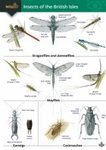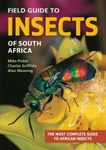![Ordination in the Study of Morphology, Evolution and Systematics of Insects Ordination in the Study of Morphology, Evolution and Systematics of Insects]()
Click to have a closer look
About this book
Contents
Customer reviews
Related titles
About this book
Contributions to the workshop on Ordination Methods in Entomological Systematics, along with ordination-based research presented at the congress symposium on The Structural Basis and Analysis of Allometric Growth in Insects, formed the initial basis for this volume. Taking those sessions even further, this book portrays many current, distinct aspects of ordination analyses that have never been covered, as well as conveying a wealth of possibilities for the biological and evolutionary interpretations that these techniques allow. Several of the aspects here are still evolving in theory and implementation, hence the text incorporates disagreement and varied usage to enable the reader to see and understand the philosophies and arguments involved. The aim of this volume is to provide insights and inspirations for those already experienced in morphometric research, and also to provide examples for inexperienced workers. Examples and arguments for required cautions and the limitations of the techniques are included, as is a wide range of methods from which to choose, each with its own characteristics and potential applications. The emphasis of this publication is thus on how researchers use and interpret ordinations to solve systematic problems in their particular taxonomic groups; it will serve as a catalyst for the exploration of the potential of ordinations in systematic and evolutionary research.
Contents
Preface. Ordinations: Basic concepts and methods. Ordination methods: their contrast to clustering and cladistic techniques (R.G. Foottit, J.T. Sorensen). An introduction to ordination, principal component analysis and discriminant analysis (R.A. Pimentel). Quantitative genetic rationales and phylogenetic interpretations. The evolutionary quantitative genetic rationales for the use of ordination analyses in systematics: phylogenetic implications (J.T. Sorensen, R.G. Foottit). Natural selection and morphometrics (B.J. Crespi). The use of discriminant function analysis for estimation of phylogeny: partitioning, perspective and problems (J.T. Sorensen). Data acquisition methods. The analysis of shape variation using ordinations of fitted functions (F.J. Rohlf). Practical machine vision for morphometric data acquisition (C.A. Meacham). Assessments of characters: interpreting variance and allometry. A statistical and empirical evaluation of some morphometric variables of honey bee classification (H.V. Daly). Lepidopteran wing morphology: the multivariate analysis of size, shape and allometric scaling (R.E. Strauss). Multivariate study of temporal variation in morphology of a gall-forming aphid (D.Wool, O. Manheim). The use of ordination methods to resolve problems of species discrimination in the genus Cinara Curtis (Homoptera: Aphidoidea: Lachnidae) (R.G. Foottit). Assessments of biological groupings: circumscription and delimitation. Using ordination methods with geographic information: species resolution in a partially sympatric complex of neotropical Tramea dragonflies (Odonata: Libellulidae) (R.W. Garrison). Variation in populations of leafhoppers and planthoppers (Auchenorrhyncha) : biotypes and biological species (M.F. Claridge, M.C. Gillham). The use of ordination techniques to discriminate within pest aphid species complexes (R.L. Blackman). Inference of lineage relationships: assessments of evolution and coevolution. Morphological variation in an ectoparasite: partitioning ecological and evolutionary influences (M.A. Houck). Discriminant analysis of year classes of periodical cicada based on wing morphometric data enhanced by molecular information (C. Simon). Phylogenetic analysis of quantitative and qualitative characters of gall-inducing midges and the historical relation to their hosts: Dasineura (Diptera: Cecidomyiidae) on rosaceae and monocots (J.C. Roskam, M. Zandee). Pronotal shape: a source of confusion or panacea in systematic studies of treehoppers (Homoptera: Membracidae)? (T.K. Wood, J.D. Pesek). Index.
Customer Reviews


































